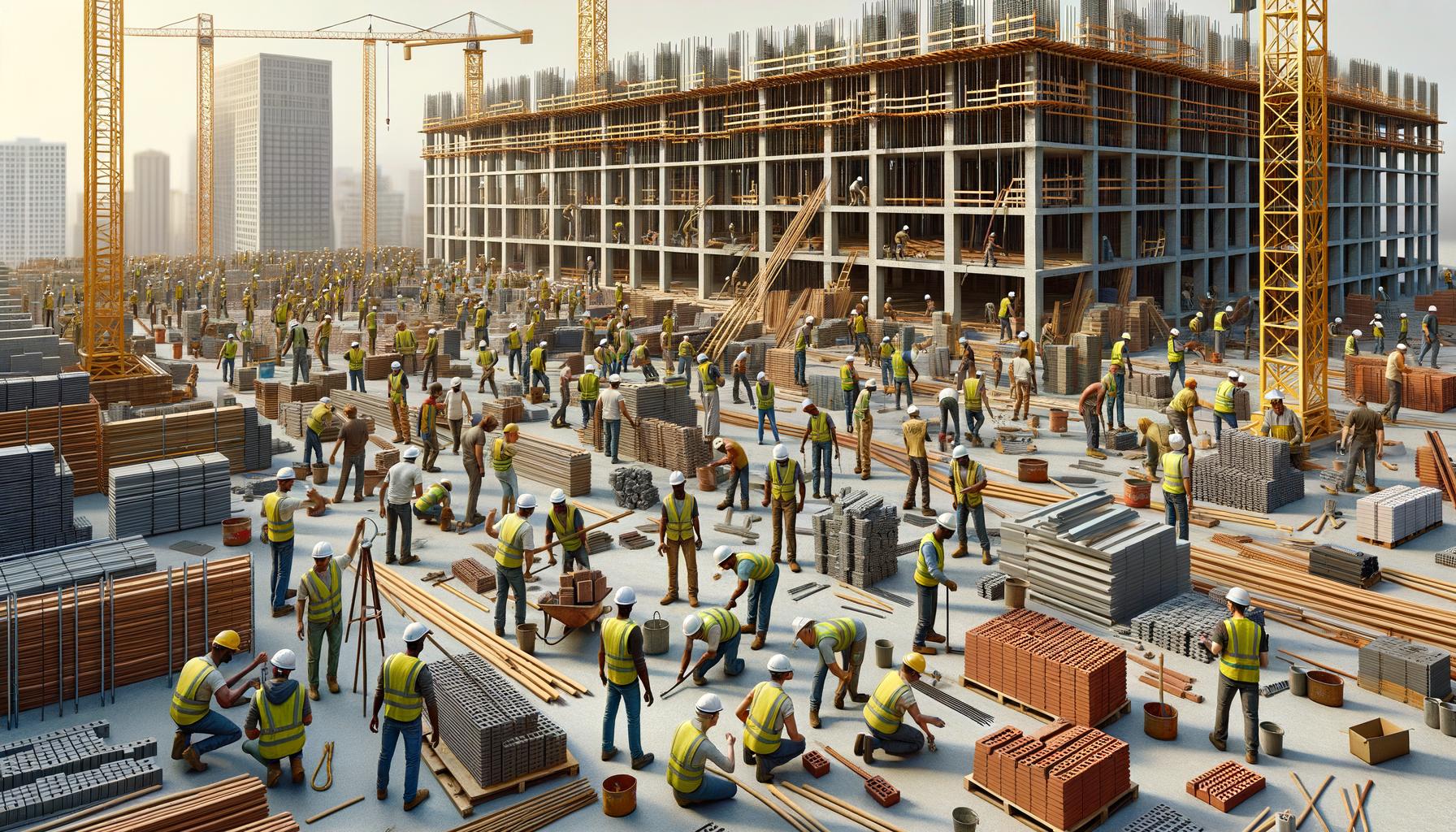
At Home Owners Association, we understand the importance of choosing the right building materials supplies for your projects. The foundation of any successful construction or renovation lies in the materials you select.
This guide will walk you through essential building materials, their uses, and how to make informed decisions for your specific needs. We’ll also explore sustainable options to help you create an environmentally friendly home while adhering to building codes and regulations.
What Are the Most Common Building Materials?
Concrete: The Foundation of Construction
Concrete stands as the cornerstone of the construction industry. Its extensive use in foundations, walls, and floors stems from its unparalleled strength and durability. The Infrastructure Australia’s market capacity report provides a new evidence base to support decision making in the construction industry.
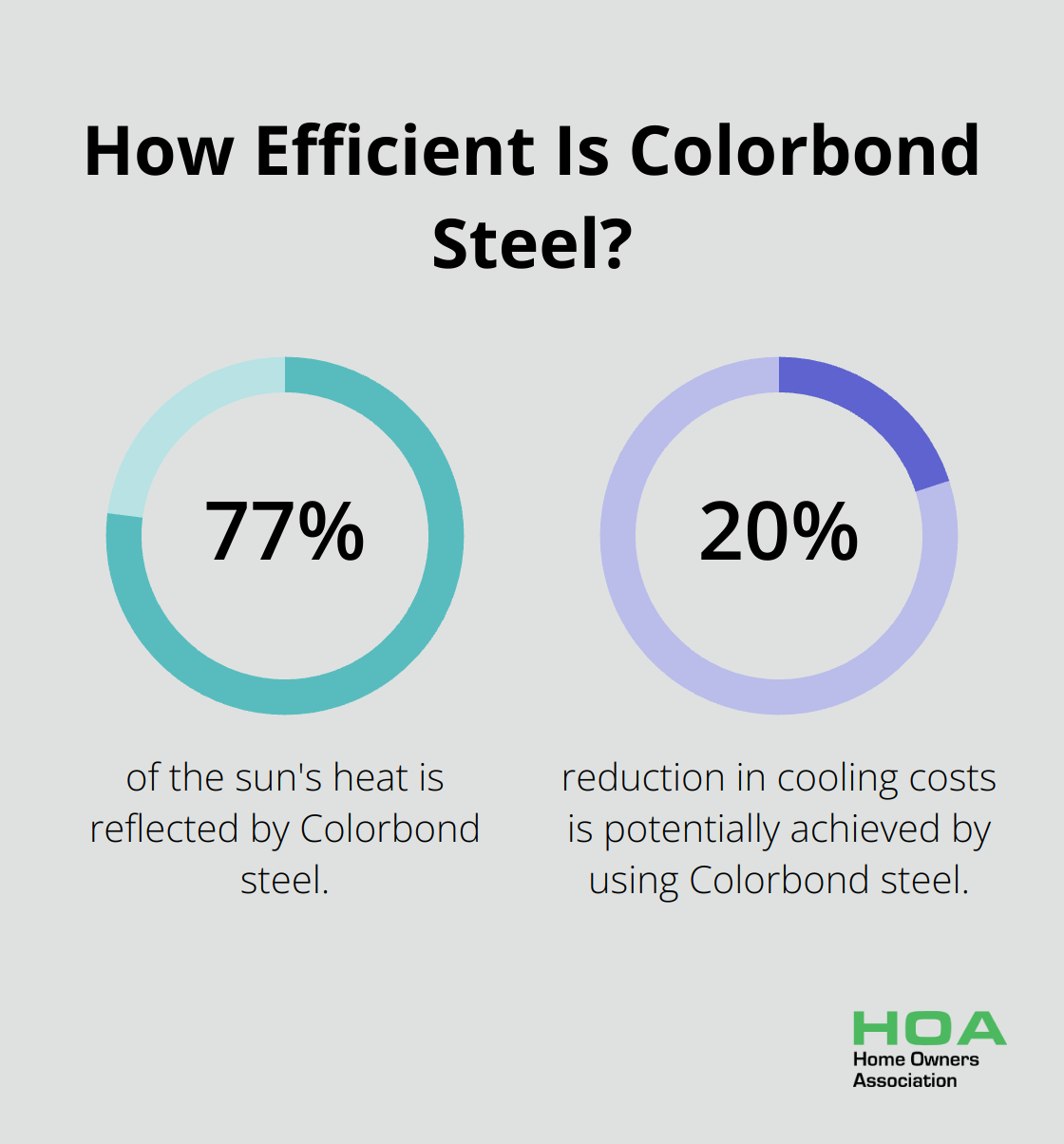
For foundations, high-strength concrete with a minimum compressive strength of 25 MPa provides a solid base to support entire structures. Walls and floors benefit from reinforced concrete, which adds stability, especially in areas prone to extreme weather.
Wood: Versatility Meets Aesthetics
Wood continues to dominate in framing, flooring, and cabinetry. Australian hardwoods like Jarrah and Spotted Gum offer both durability and beauty. Plantation pine serves as a cost-effective and sustainable option for framing, meeting building codes nationwide.
For flooring selection, the Janka hardness rating proves invaluable. High-traffic areas require species with a rating above 8.5 kN (such as Blackbutt or Ironbark). These hardwoods resist wear and tear, maintaining their appearance for years.
Steel: Strength and Flexibility
Steel plays an indispensable role in structural support and roofing. Its high strength-to-weight ratio allows for the creation of large, open spaces in both commercial and residential buildings.
Colorbond steel has become a popular roofing choice. It reflects up to 77% of the sun’s heat, potentially reducing cooling costs by 20% – a significant advantage in Australia’s sun-drenched climate.
Glass: Transparency and Energy Efficiency
Glass serves multiple purposes in modern construction, from windows and doors to skylights. Advanced glazing technologies now offer improved insulation and UV protection. Low-E glass has a coating that reduces the amount of solar heat gain while still maintaining good levels of visible light transmission.
Brick and Stone: Timeless Durability
Brick and stone continue to be favored for exterior walls and fireplaces. These materials offer excellent thermal mass, helping to regulate indoor temperatures naturally. Australian-made bricks can withstand our harsh climate conditions, with some manufacturers offering warranties of up to 100 years.
The selection of building materials significantly impacts a project’s success. As we move forward, we’ll explore how to choose the right materials for your specific needs, considering factors such as climate, durability, and cost-effectiveness.
How to Select the Right Building Materials
Selecting the right building materials for your project impacts the longevity, efficiency, and overall success of your construction. This guide will help you make informed choices based on critical factors.
Climate Considerations
Australia’s diverse climate demands careful material selection. In coastal areas, salt-resistant materials are essential. Stainless steel fixings and fittings (grade 316 or higher) offer superior corrosion resistance compared to standard steel, thanks to the addition of molybdenum. In bushfire-prone regions, materials with a high BAL (Bushfire Attack Level) rating are necessary. The Australian Building Codes Board recommends materials like toughened glass and fire-retardant treated timber to enhance a structure’s fire resistance.
Durability and Maintenance
Long-term performance is key when selecting materials. Fiber cement cladding offers excellent durability with minimal maintenance, providing waterproofing and protection from weather. It may also offer thermal and sound insulation. Timber cladding provides a natural aesthetic but requires regular maintenance to prevent rot and insect damage.
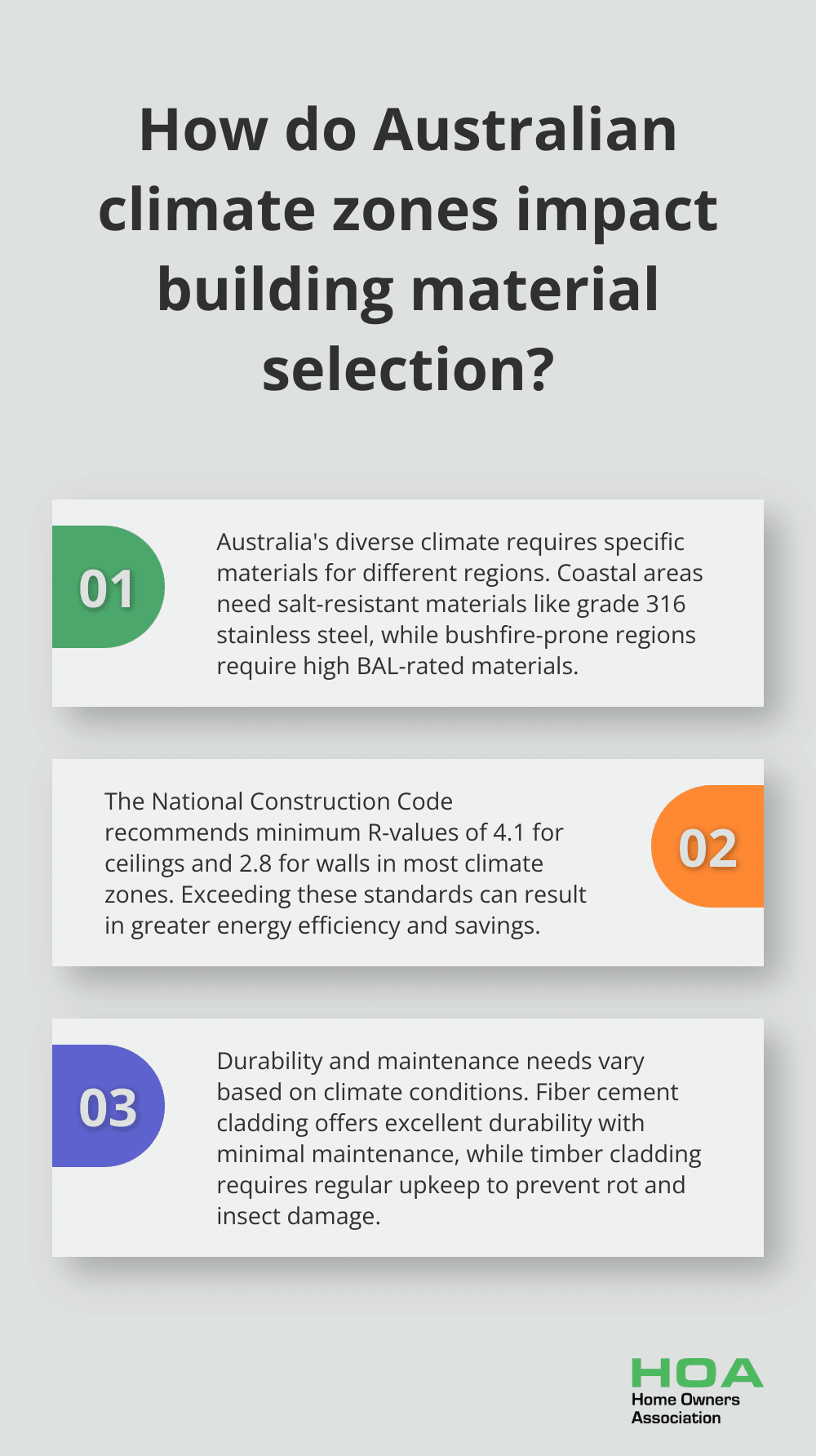
Flooring choices also impact long-term maintenance. Porcelain tiles, with a water absorption rate of less than 0.5%, offer superior durability in high-moisture areas compared to natural stone, which may require sealing every 1-3 years.
Cost vs. Value
Initial costs shouldn’t be the only consideration. Take roofing materials as an example. While concrete tiles may have a lower upfront cost, metal roofing like Colorbond can last up to 70 years with minimal maintenance, potentially offering better long-term value.
For insulation, materials with higher R-values can lead to significant energy savings. The National Construction Code recommends minimum R-values of 4.1 for ceilings and 2.8 for walls in most climate zones, but exceeding these standards can result in even greater energy efficiency.
Aesthetic and Functional Balance
Aesthetics are important, but functionality shouldn’t be compromised. Engineered wood flooring offers the look of solid timber but with enhanced stability and moisture resistance. Similarly, composite decking materials provide the appearance of wood with improved durability and lower maintenance requirements.
Compliance with Building Codes
Adhering to building codes is non-negotiable. The National Construction Code (NCC) sets out the minimum requirements for safety, health, amenity, and sustainability in building design and construction. The NCC mandates specific fire resistance levels for different building classes and locations.
When selecting materials, always check their compliance with Australian Standards. Products like structural timber must meet AS 1684 for residential timber-framed construction, ensuring they can withstand the loads and stresses of your specific project.
The next chapter will explore sustainable and eco-friendly building materials, which are becoming increasingly popular among environmentally conscious homeowners and builders.
How Sustainable Materials Benefit Your Build
Sustainable and eco-friendly building materials have become increasingly popular among homeowners and builders in Australia. These materials create healthier, more efficient, and often more cost-effective homes in the long run.
Recycled Materials: A Sustainable Solution
Recycled steel and aluminum lead the charge in sustainable construction. Recycling aluminium can save up to 95% of energy compared to producing virgin aluminium. Australian companies are pioneering the use of electric technologies in recycling processes, further reducing the environmental impact.
Natural and Reclaimed Options for Character
Bamboo flooring offers a sustainable alternative to traditional hardwoods. It reaches maturity in just 3-5 years (compared to decades for most hardwoods). Australian-grown bamboo flooring options reduce transportation emissions and support local industries.
Reclaimed wood brings unique aesthetics and sustainability to projects. Sourced from old buildings, barns, or even sunken logs from river bottoms, this wood reduces demand for new timber harvesting.
Creating Healthier Indoor Environments
Low-VOC (Volatile Organic Compound) paints and finishes create healthier indoor environments. These products emit fewer harmful chemicals, reducing the risk of respiratory issues and other health problems associated with poor indoor air quality. The Australian Paint Approval Scheme (APAS) provides certifications for low-VOC products, helping consumers identify safer options.
Energy-Efficient Building Systems
Insulated Concrete Forms (ICFs) have gained traction in Australia for their superior insulation properties. Building with ICFs can cost more initially compared to standard concrete or some other materials, as savings come over time. ICFs also offer excellent sound insulation and fire resistance, making them a smart choice for areas prone to bushfires.
Harnessing Solar Power in Roofing
Solar tiles revolutionize roofing by combining energy generation with traditional roofing materials. Unlike bulky solar panels, these tiles integrate seamlessly into the roof structure. Some Australian manufacturers now offer solar tiles that withstand our harsh climate conditions (including high UV exposure and extreme temperatures).
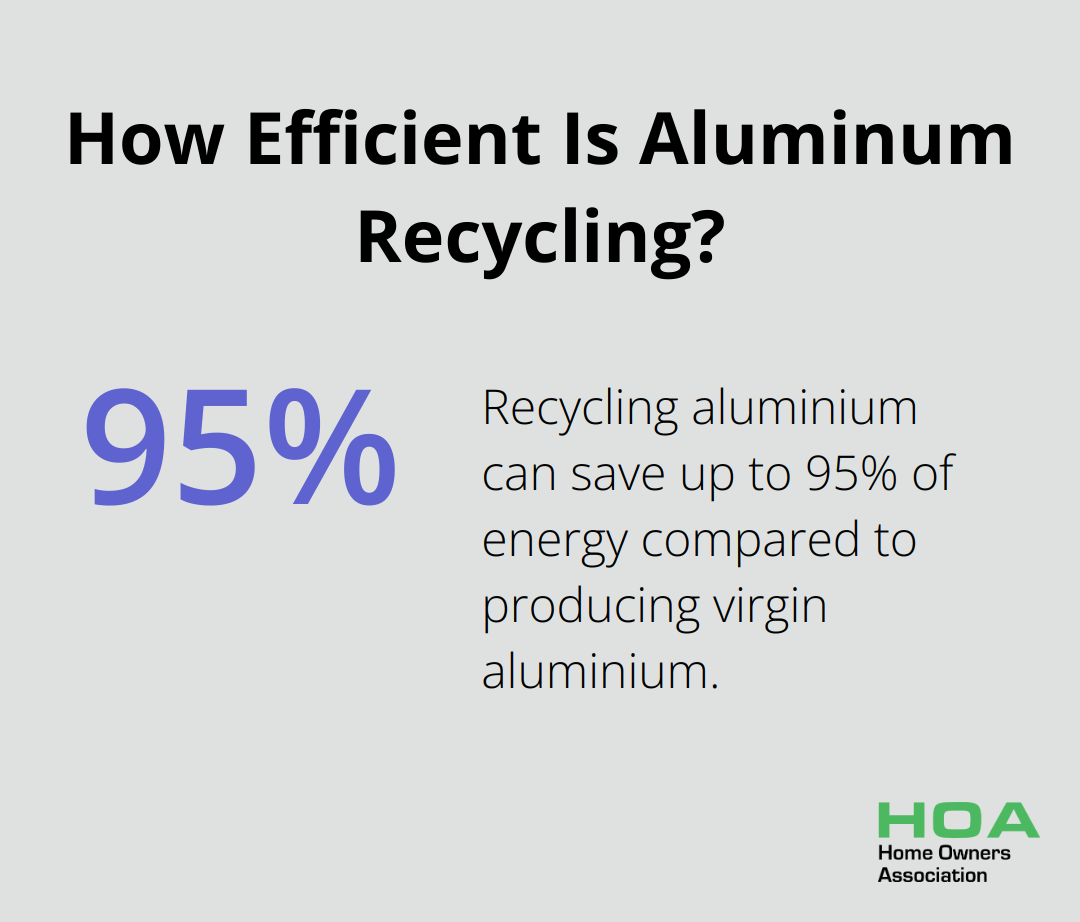
Green roofing options, such as living roofs covered with vegetation, provide another innovative approach. These roofs reduce urban heat island effects, improve air quality, and provide additional insulation. In cities like Melbourne, green roofs have reduced indoor temperatures by up to 4°C during summer heatwaves.
Final Thoughts
Selecting the right building materials supplies impacts the safety, efficiency, and aesthetics of any construction project. Climate, durability, cost-effectiveness, and compliance with building codes all play a role in material choices. The trend towards sustainable options like recycled steel, bamboo flooring, and solar tiles offers long-term benefits for energy efficiency and indoor air quality.
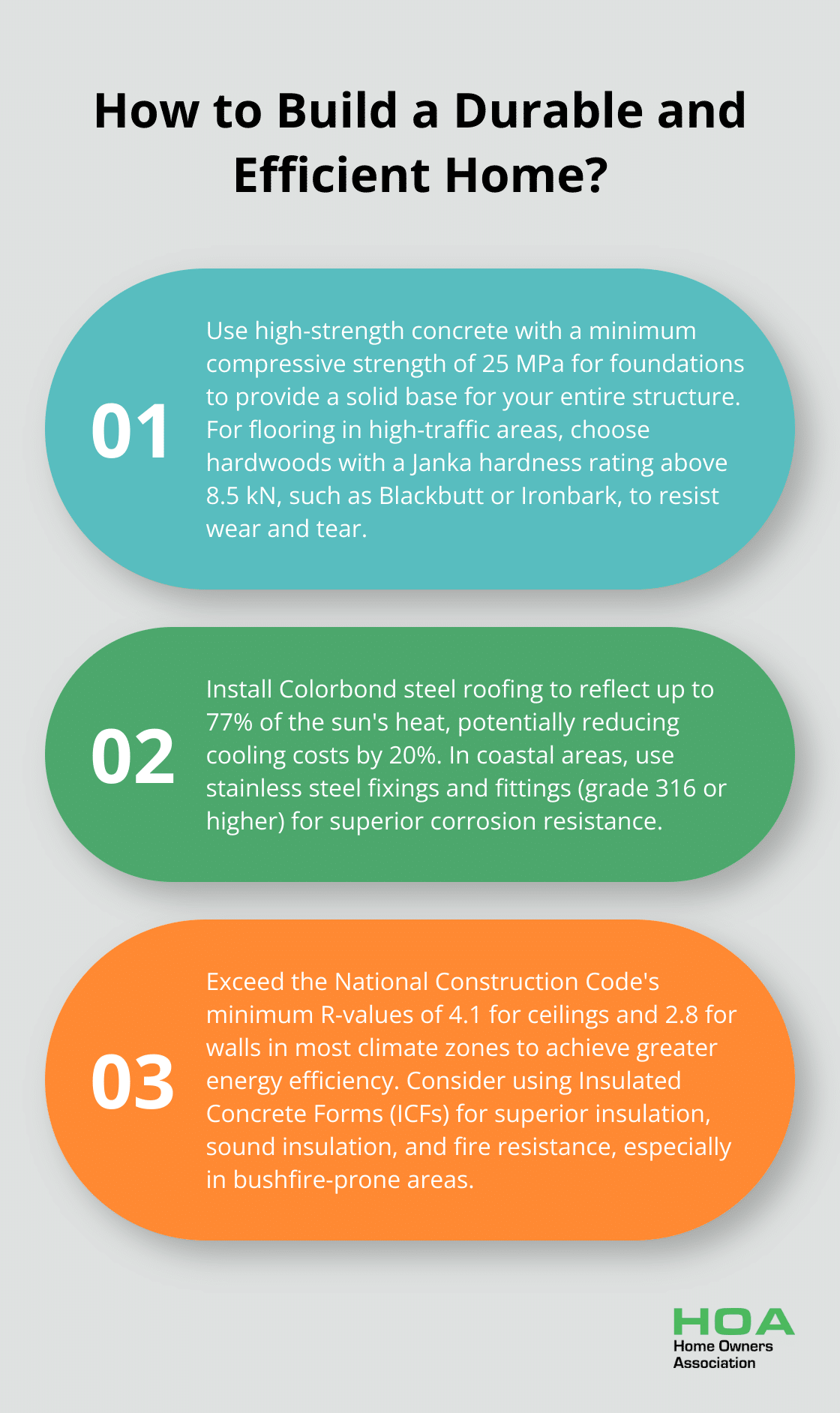
We at Home Owners Association offer our members in Melbourne access to trade pricing and discounts on a wide range of building materials supplies. Our expert advice and personalized guidance help you make the best decisions for your specific needs. We provide educational resources and ongoing support to help our members achieve successful home projects.
Building or renovating a home requires the right materials, knowledge, and support. With these elements in place (and the assistance of professionals for large-scale projects), you can create a space that’s beautiful, functional, sustainable, and efficient for years to come. Our team stands ready to support you throughout your construction or renovation journey.





